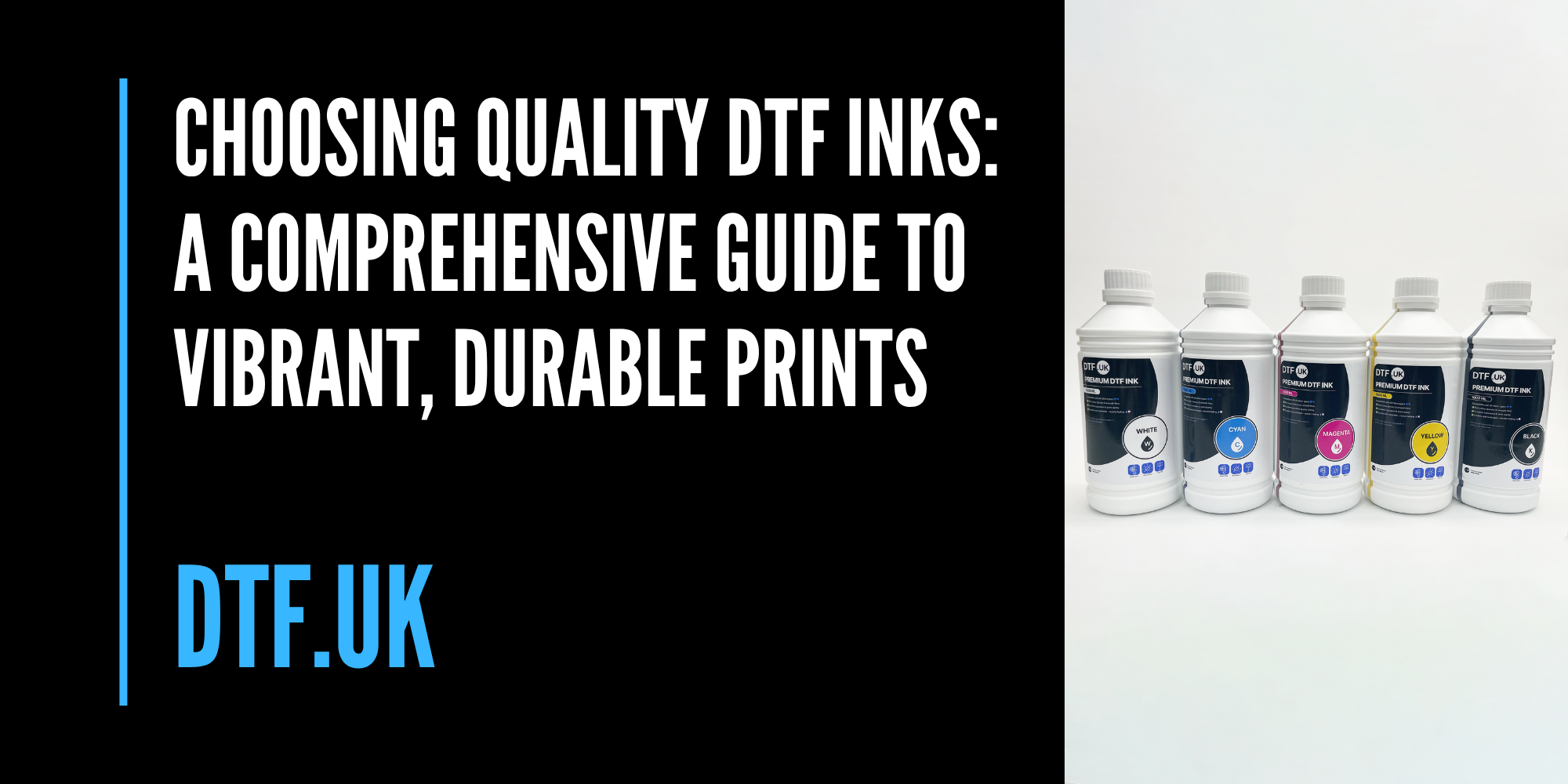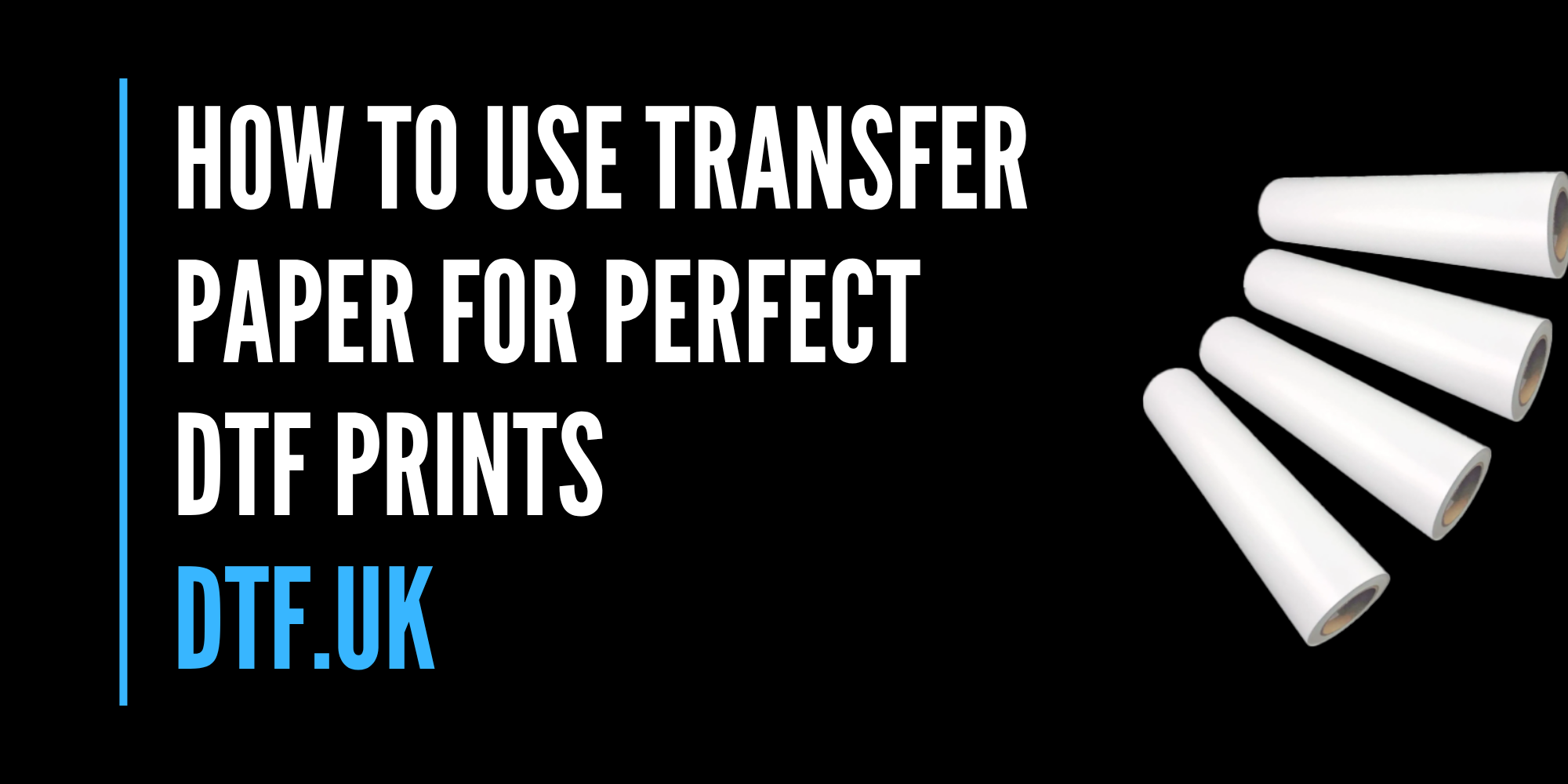The world of direct to film (DTF) heat transfer offers exciting possibilities for creating vibrant, durable designs on a variety of garments. However, achieving high-quality DTF prints requires attention to detail and a thorough understanding of the transfer process. Many common mistakes can lead to subpar results, transfer errors, or even complete transfer failure. This article will delve into the most common DTF transfer mistakes and how to avoid them, ensuring your DTF printing results are always top-notch. By understanding these pitfalls and implementing best practices, you can master the art of DTF printing and consistently achieve professional results.
Understanding DTF Transfer Basics
To avoid the common mistakes associated with DTF transfer, it's crucial to have a solid understanding of the fundamentals. This encompasses understanding what DTF printing is, understanding the intricacies of the transfer process, and knowing the wide range of applications for which DTF is suitable. By building this strong foundation, you can proactively prevent errors and troubleshoot any issues that may arise during your DTF projects. By understanding these basic elements, you will avoid these mistakes.
What is DTF Printing?
DTF printing, or direct to film printing, is a heat transfer technology where a design is printed onto a special transfer paper using DTF inks. The printed design includes an adhesive powder, which is then cured using heat. This creates a transfer ready to be applied to a garment using a heat press. Unlike other printing methods, DTF allows for printing on a wide variety of fabrics, including cotton, polyester, and blends. The use of a DTF printer is essential for producing high-quality transfers as it is specifically engineered for this process and needs to be properly calibrated. Ensuring proper maintenance and calibration of your printer is key to avoiding print quality issues.
The Process of DTF Heat Transfer
The DTF heat transfer process involves several critical steps. First, the artwork is printed in reverse onto the transfer paper using specialized DTF inks. Next, a powdered adhesive is applied to the wet ink and the transfer is cured. Then, the transfer is placed onto the garment, and heat and pressure are applied using a heat press. The heat press settings, including temperature and dwell time, are crucial for proper adhesion. After the transfer cools, the transfer paper is peeled away, leaving the printed design adhered to the garment. If the heat press platen does not have even heat distribution, the results will have distortion.
Common DTF Transfer Applications
One of the most compelling aspects of DTF heat transfer is its versatility. Common DTF transfer applications span across various industries, making it a popular choice for customization and personalization. It is frequently used for t-shirts, hoodies, and other apparel. DTF is also suitable for bags, hats, and even shoes. The ability to print on a wide range of materials opens up possibilities for creating unique and personalized products. However, regardless of the application, it's essential to use high-quality materials and follow the manufacturer's recommendations to ensure longevity and prevent transfer failure.
Identifying Common DTF Transfer Mistakes
Common DTF Transfer Errors to Watch For
One of the most common DTF transfer errors involves issues with adhesion. Incomplete adhesion can result in incomplete transfers, where parts of the printed design peel away from the garment. This is often caused by incorrect heat press settings, such as insufficient temperature or dwell time. Uneven heat distribution across the heat press platen can also lead to inconsistent adhesion. Poor ink adhesion can occur when applying the DTF transfer, preventing the DTF inks from properly adhering to the garment fibers, ultimately affecting the quality of the DTF print. Addressing these issues requires attention to detail and ensuring the heat press is properly calibrated and maintained to distribute heat evenly and adjust the heat accordingly. Following the manufacturer's recommendations can minimize the chances of transfer errors and ensure high-quality DTF prints.
Typical Mistakes in Ink Usage
Ink-related problems are frequently encountered when using a DTF printer. A common DTF mistake is using the wrong type of ink for the printer or transfer paper. This can lead to subpar results, such as poor color vibrancy or transfer failure. Another issue is poor ink quality. Low-quality DTF inks may not adhere properly to the garment or may fade quickly after washing. White ink clogging is also a common problem, particularly if the printer is not properly maintained or if the ink is not stored correctly. Regular cleaning and maintenance of the printer is essential to prevent clogs. By using the proper DTF inks and adhering to the manufacturer's recommendations, you can avoid this mistake.
Transfer Paper Issues and Solutions
The transfer paper itself can be a source of many common DTF transfer problems. The type of transfer paper used can significantly affect the quality of the DTF print. Using the wrong transfer paper can lead to poor adhesion, blurred images, or difficulty peeling the paper after the transfer. In some cases, the transfer paper might be incompatible with the DTF inks being used. Improper storage of the transfer paper can also lead to issues, such as moisture absorption, which can affect the transfer process. Ensure proper storage and use high-quality transfer paper from a reputable manufacturer to avoid this mistake and follow the recommended guidelines. Pre-treating the paper is also important in order to ensure proper results.
How to Fix DTF Transfer Errors
Diagnosing Transfer Errors
Diagnosing DTF transfer errors is crucial for achieving consistent, high-quality results. Start by carefully examining the DTF print for any signs of incomplete transfer, such as peeling or fading. Check the heat press settings to ensure they are correct for the material being used. Uneven heat distribution across the heat press platen can also cause transfer errors, so make sure the heat press is properly calibrated and that the heat distribution is even. Examine the transfer paper, DTF inks and the garment carefully. By using a systematic approach, you can pinpoint the root cause of the transfer errors and implement the necessary corrections. This requires attention to detail.
Effective Pre-Treatment Techniques
Effective pre-treatment techniques are essential for ensuring optimal adhesion of the DTF print to the garment. Pre-treating involves applying a special solution to the fabric before the transfer process to enhance ink adhesion and prevent the DTF inks from bleeding. Follow the manufacturer's recommendations for pre-treatment solutions and application methods. Ensure proper and even coverage of the pre-treatment solution, and allow it to dry completely before proceeding with the DTF transfer. Skipping or neglecting pre-treatment can result in poor ink adhesion, resulting in incomplete transfers, poor wash resistance, and subpar results.
Master the Art of DTF Curing
Master the art of DTF curing to achieve durable and long-lasting DTF prints. Curing involves applying heat to the DTF inks and adhesive powder to create a permanent bond. This process can be achieved using a heat press or a dedicated curing oven. Follow the manufacturer's recommendations for curing times and temperatures to ensure proper curing without damaging the garment or causing the ink to crack. Incomplete curing can lead to poor adhesion and premature fading, while over-curing can cause the DTF inks to become brittle. Curing is a critical step in the DTF transfer process to follow carefully.
Best Practices to Avoid Common DTF Mistakes
Choosing the Right DTF Printer
Choosing the right DTF printer is a crucial step to avoid these mistakes and ensure high-quality results. Consider factors such as print volume, print size, and resolution when selecting a DTF printer. Ensure the printer is compatible with the DTF inks and transfer paper. Look for a printer with reliable performance, efficient ink management, and a user-friendly interface. Investing in a high-quality DTF printer from a reputable manufacturer can minimize print quality issues and ensure consistent, professional-looking prints. By using the wrong DTF printer, you can affect the quality of the printed design.
Tips for Optimizing Transfer Paper Usage
Optimizing transfer paper usage can help minimize waste and reduce costs. Use high-quality transfer paper from a reputable manufacturer to ensure optimal ink adhesion and image quality. Store transfer paper in a cool, dry place to prevent moisture absorption, which can affect the transfer process. Handle transfer paper carefully to avoid creases or tears. Properly align the printed design on the transfer paper before applying it to the garment. By following these tips, you can maximize the efficiency of transfer paper usage and achieve high-quality DTF prints.
Maintaining Ink Quality for Best Results
Maintaining ink quality is essential for achieving vibrant and durable DTF prints. Use only high-quality DTF inks specifically formulated for your DTF printer. Store DTF inks in a cool, dark place to prevent degradation. Regularly clean and maintain the DTF printer's print heads to prevent white ink clogging and ensure proper ink flow. Replace DTF inks before their expiration date to avoid inconsistent colors or poor adhesion. Monitor the ink levels in the printer and refill them as needed. Following these best practices can help maintain ink quality, minimize print quality issues, and ensure the longevity of your DTF prints. Using the wrong ink can affect the quality of the DTF print.



